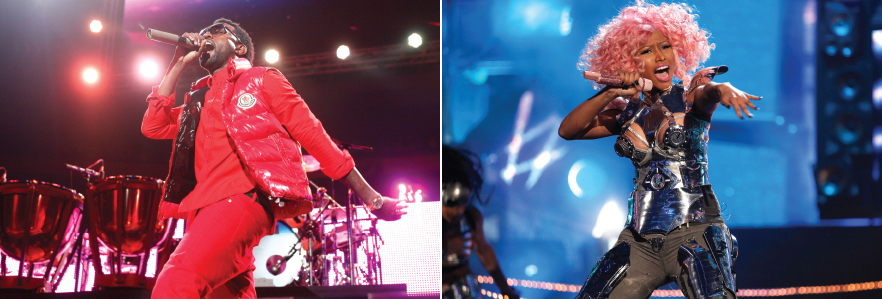Hip-Hop Redraws Musical Lines
Printed Page 147
Hip-hop was another genre demonstrating pop music’s ability to change with the times and move from the edge of the music scene into the mainstream. Just as punk arose to challenge commercial rock, hip-hop emerged to defy the polished, professional, and often unpoliticized world of soul. By the 1980s, the pop-music scene was dominated by “safe” dance disco performed by white bands (such as the Bee Gees), black artists (including Donna Summer), and integrated groups (for example, the Village People). This left a vacuum for a new sound.
Hip-hop drew on features of urban culture including rapping, cutting (or music sampling) by deejays, break dancing, street clothing, poetry slams, and graffiti art. Initially, the music industry saw it as a novelty destined to go nowhere. But by 1985, hip-hop had become a popular genre with the commercial successes of groups and artists like Run-DMC, the Fat Boys, LL Cool J, and Queen Latifah. Soon, white groups like the Beastie Boys, Limp Bizkit, and Kid Rock were combining hip-hop and hard rock, and some white artists (such as Eminem) attracted huge followings by emulating black rap artists.

Although hip-hop encompasses many different styles, its most controversial subgenre is probably gangster rap. In seeking to describe gang violence in America, gangster rap has been accused of inciting violence through its lyrics and the illegal activities of some of its performers. Gangster rap drew widespread condemnation in 1996 with the shooting death of Tupac Shakur, a rapper and convicted sex offender. Criticism mounted in 1997 after a drive-by shooter killed the Notorious B.I.G., who had dealt drugs as a youngster before becoming a rapper. Under pressure, the hip-hop industry softened its hard edges. Most prominently, artist Sean “Diddy” Combs developed a more danceable hip-hop that combined singing and rapping with musical elements of rock and soul. Today, hip-hop stars include artists such as 50 Cent, who emulates the gangster drama, and artists like Kanye West, Lupe Fiasco, Drake, and Talib Kweli, who often bring an old-school social consciousness to their performances.
From its origins in an urban American subculture, hip-hop has become a major part of mainstream global culture. Today, it’s big business, and its most successful practitioners have diversified from record labels to clothing lines, restaurants, and movie production companies.